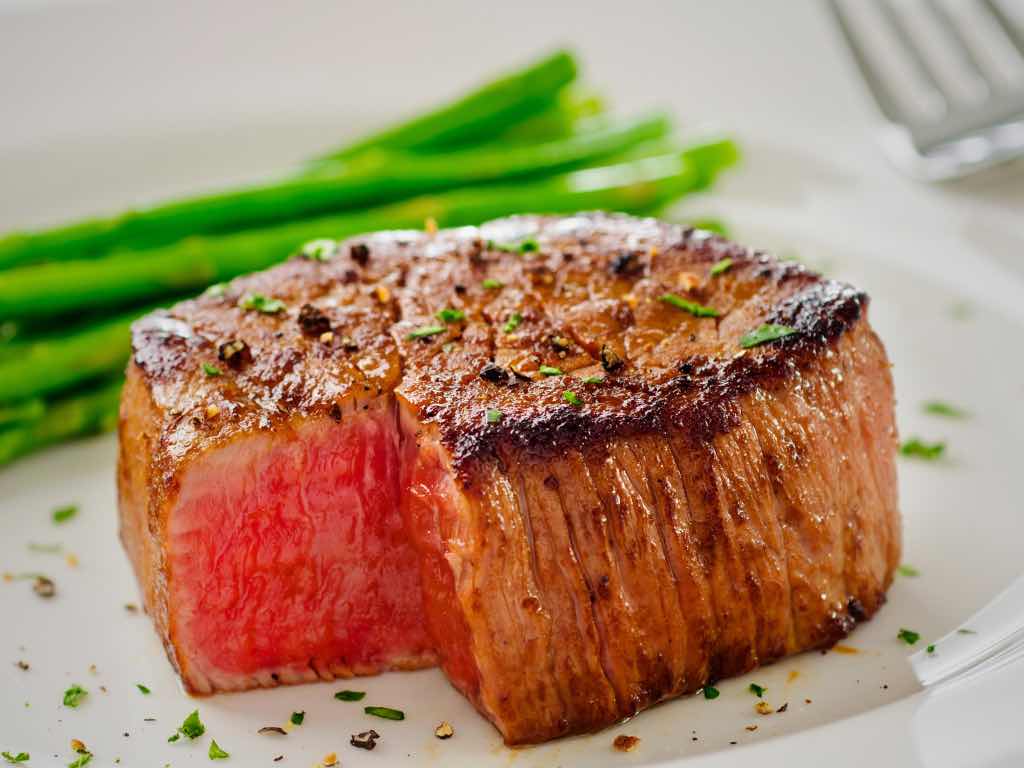
Filet Mignon: An Extravagant Journey into Culinary Perfection
|
|
Time to read 4 min
Welcome to One Stop Halal!
Written by: GrillMaster Arif
|
|
Time to read 4 min
Welcome to the exquisite world of gourmet cuisine, where succulent flavors and unparalleled tenderness merge into one special dish: Filet Mignon. Renowned for its exceptional taste and luxurious texture, filet mignon has long held a special place in the hearts of culinary enthusiasts and steak connoisseurs. In this blog, we will explore this delectable cut's origins, characteristics, and preparation, elevating your appreciation for this culinary marvel.
Filet Mignon is a highly prized and tender cut of beef. It is taken from the smaller end of the tenderloin, a long muscle that runs along the backbone of a cow. The tenderloin is not a weight-bearing muscle, which contributes to its tenderness. Filet mignon is known for its incredibly soft texture, fine marbling, and mild flavor. It is often considered one of the most luxurious and sought-after cuts of beef, frequently featured in high-end restaurants and special occasions.
Filet mignon, derived from the French term "dainty fillet," is a highly prized and luxurious cut of beef. It is sourced from the tenderloin, a long and cylindrical muscle situated along the backbone of a cow. Let's explore the origins and characteristics that contribute to the esteemed status of filet mignon:
Cooking filet mignon requires precision and care to preserve its delicate flavor and tenderness. Here are some popular cooking techniques:
In conclusion, filet mignon stands as the ultimate embodiment of culinary luxury. With its unparalleled tenderness, delicate flavor, and luxurious texture, this esteemed cut of beef has solidified its place as a symbol of luxury and refinement in the world of gastronomy. From the first succulent bite to the last lingering taste, filet mignon offers an unparalleled dining experience.The hallmark of filet mignon lies in its exceptional tenderness. Derived from the tenderloin, a muscle that experiences minimal weight-bearing function, this cut is spared the rigors of constant movement. As a result, the meat remains tender and remarkably soft, practically dissolving in your mouth with each indulgent bite. The sensation of savoring filet mignon is akin to experiencing a culinary caress as the meat effortlessly yields to the gentlest pressure of a fork or knife.While the tenderness is sublime, the delicate flavor of filet mignon further elevates its luxurious appeal. Unlike beef cuts with stronger or more pronounced flavors, filet mignon offers a more subtle and refined taste. This allows the natural essence of the beef to shine through, giving each bite a pure, unadulterated beef experience. The mild flavor provides a blank canvas for complementary accompaniments and sauces to enhance the sensory journey.

© 2025 One Stop Halal, Inc.